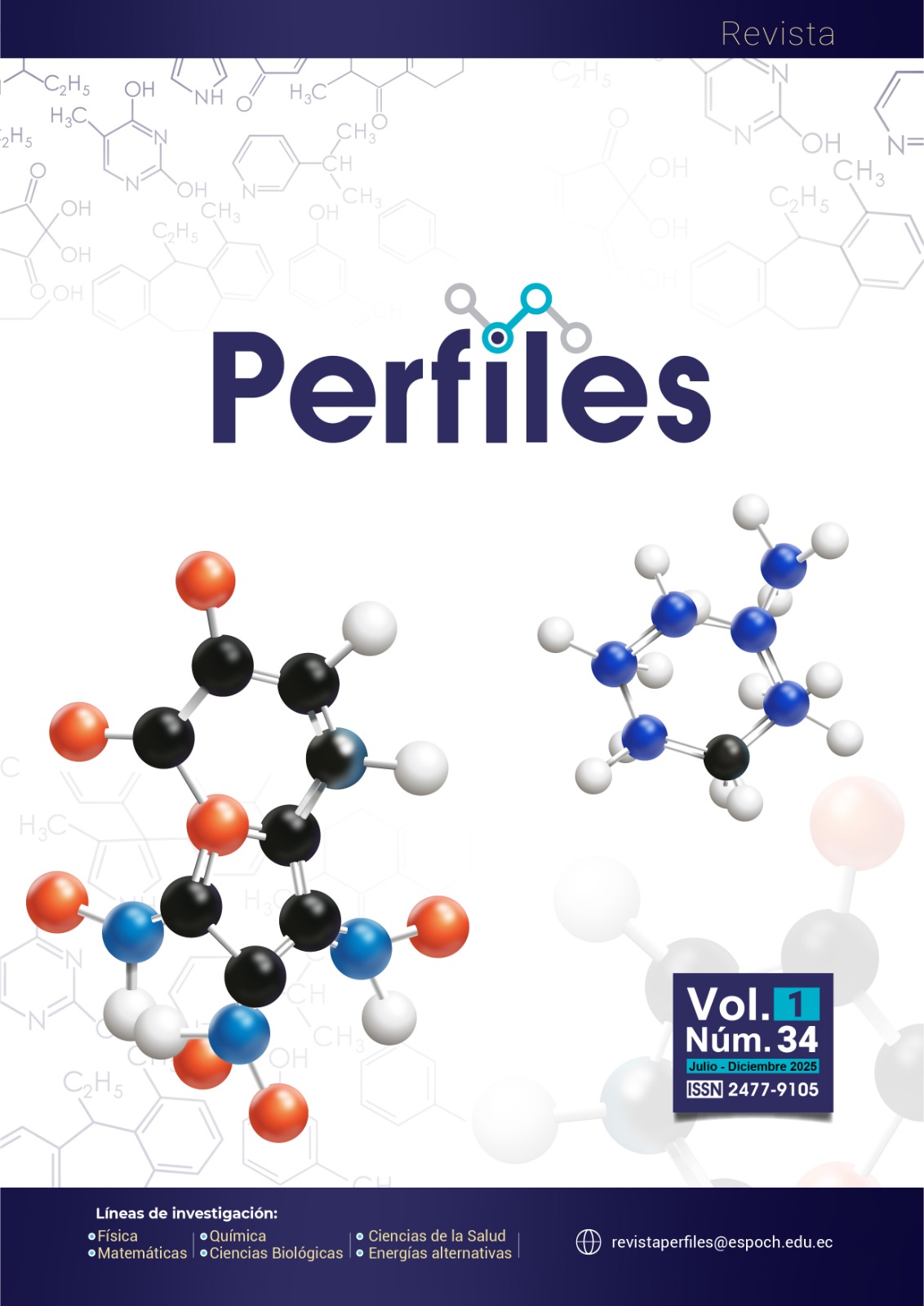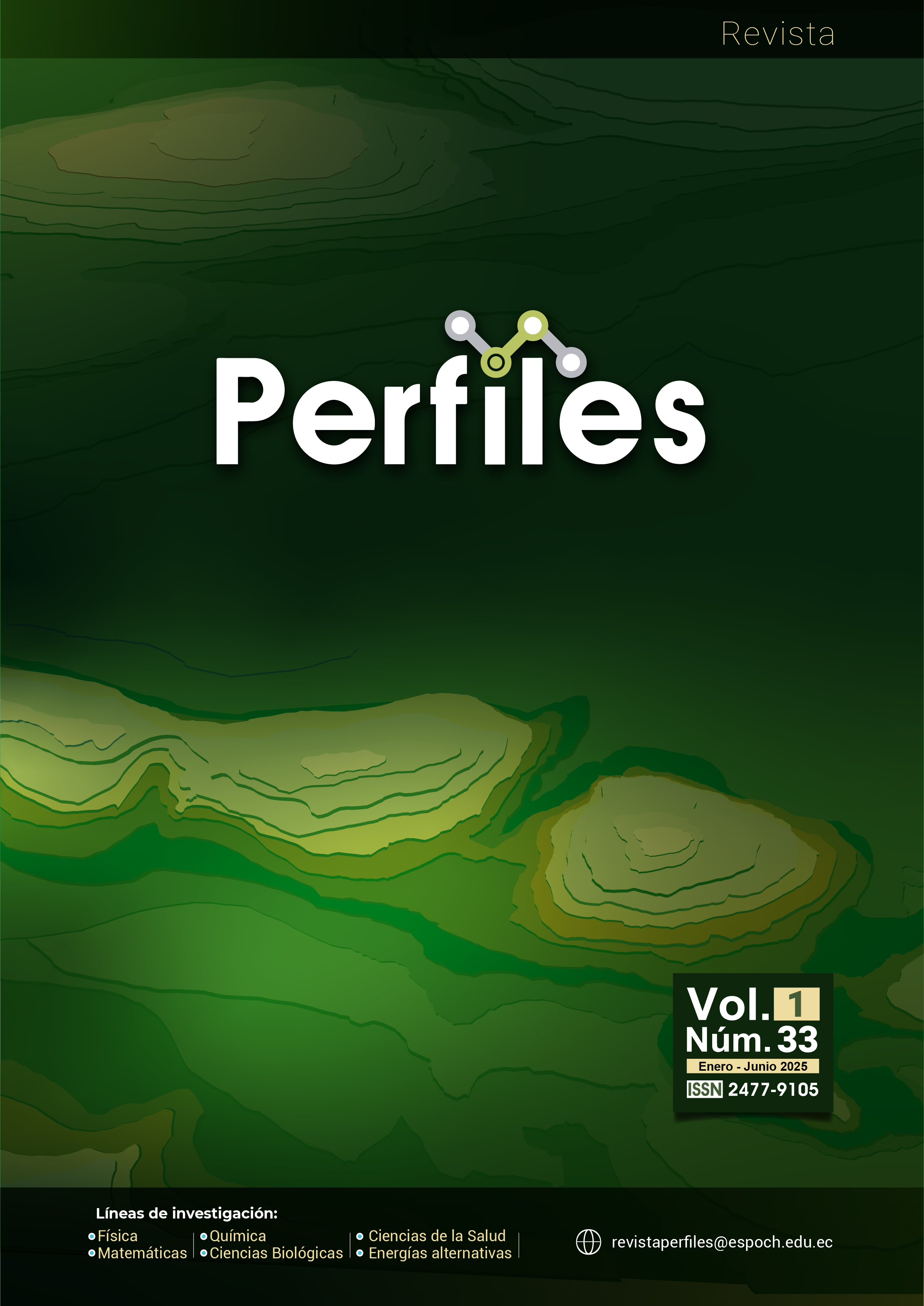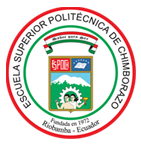ALTERNATIVE SOURCE FOR OXIGEN OBTENTION ONLABORATORY SCALE
DOI:
https://doi.org/10.47187/perf.v1i34.331Keywords:
Chemical education, ecofriendly, sustainable, easy obtainingAbstract
Trials for Oxygen preparation at laboratory scale and its reactions to study their chemical properties are useful and stonishing assays and become an valuable pedagogical tool for educators and novice or first years chemistry students. Potassium chlorate KClO3 has been traditionally used for oxygen obtention, however in April 2023, the Ecuadorian Government enacted a national law that makes difficult the acquisition, transportation and storage of this chemical reagent, acause of this new laws its important get alternative ways to O2 preparation. Here, we present an alternative method to obtain oxygen, based on the catalytic decomposition of hydrogen peroxide (H2O2), employing several substances as catalysts sourse, a set of five different catalyst were studied. Best results were obtained with powdered yeast, achieving larger oxygen gas volume and lower standard deviation for the experimental data, with good repeatability.
Downloads
References
Lazo Santibáñez L. Estrategia para la enseñanza y el aprendizaje de la química general para estudiantes de primer año de universidad. Rev Electr Diálogos Educ REDE. 2017 Jul 24;12(23).
Gonzales Balladares JD, Toque Huaman E. Química a microescala en la enseñanza experimental usando una microbalanza de cristal de cuarzo. Educ Quím. 2022 Oct 21;33(4):86–96.
Turcio Ortega D, Palacios Alquisira J. Experiencias en la enseñanza experimental basada en competencias. Educ Quím. 2015 Jan;26(1):38–42.
Aljaghoub H, Alasad S, Alashkar A, AlMallahi M, Hasan R, Obaideen K, et al. Comparative analysis of various oxygen production techniques using multi criteria decision making methods. Int J Thermofluids. 2023 Feb;17:100261.
Asghari E, Abdullah MI, Foroughi F, Lamb JJ, Pollet BG. Advances, opportunities, and challenges of hydrogen and oxygen production from seawater electrolysis: an electrocatalysis perspective. Curr Opin Electrochem. 2022 Feb;31:100879.
Agustian HY, Finne LT, Jørgensen JT, Pedersen MI, Christiansen FV, Gammelgaard B, et al. Learning outcomes of university chemistry teaching in laboratories: a systematic review of empirical literature. Rev Educ. 2022 Aug 4;10(2).
Aponte de Ramírez M. Obtención y propiedades del oxígeno, introducción a la catálisis y a la estequiometría. In: Manual de prácticas de laboratorio. Barcelona: Universidad Santa María; 2018.
Wojewódka A, Zakusylo R, Kravets V, Romanchenko A, Jarosz T. Investigation of metal oxides as catalysts for the thermal decomposition of potassium chlorate(VII). Cent Eur J Energ Mater. 2018 Jun 22;15(2):327–38.
Cannon JC, Zhang YC. Catalytic decomposition of potassium chlorate. J Therm Anal. 1994 May;41(5):981–93.
Lara Jaramillo L; Ministerio de Defensa, Gobierno de la República del Ecuador. Acuerdo Ministerial No 145 [Internet]. Quito: Ministerio de Defensa; 2023 Apr [cited 2024 Apr 27]. Available from: https://www.defensa.gob.ec/wp-content/uploads/downloads/2023/04/ACUERDO-MINISTERIAL-145.pdf
Chica ADC, Andrade IP, Miranda RP, Moreno RAF. Los TPL con enfoque en química verde, como estrategias de enseñanza en reacciones químicas inorgánicas a microescala [Internet]. Zenodo; 2023 [cited 2024 Apr 27]. Available from: https://doi.org/10.5281/zenodo.8128216
Chang R, Goldsby KA. Química. 12th ed. México: McGraw Hill Interamericana de Editores S.A. de C.V.; 2017. 902 p.
Guija Guerra H, Guija Poma E. Radicales libres y sistema antioxidante. Horiz Med (Lima). 2023 Mar 31;23(2):e2158.
Dergal SB. Química de los alimentos [Internet]. Pearson Publications Co.; 2006 [cited 2024 Apr 27]. Available from: https://fcen.uncuyo.edu.ar/upload/libro-badui200626571.pdf
Camacho RL, Avelar Lozano E, Morales Trejo A, Pérez B, Sánchez V, Arce Vázquez N, et al. Algunas alternativas para mitigar el estrés por calor en animales: arginina y metionina como antioxidantes. Arch Latinoam Prod Anim. 2022 Oct 15;30(Suppl 1):103–17.
Goyal MM, Basak A. Human catalase: looking for complete identity. Protein Cell. 2010 Oct 9;1(10):888–97.
Marin Arguello I, Roustan Espinoza L. Purificación y determinación de actividad enzimática de la catalasa en Staphylococcus aureus. Encuentro. 2000 Jan 28;(52):54–66.
Salem IA, El Maazawi M, Zaki AB. Kinetics and mechanisms of decomposition reaction of hydrogen peroxide in presence of metal complexes. Int J Chem Kinet. 2000;32(11):643–66.
Mathews CK, Van Holde KE, Ahern KG. Bioquímica [Internet]. Philadelphia (PA): Pearson Education; 2004 [cited 2024 Apr 27]. 1404 p. Available from: https://www.amazon.com/-/es/Christopher-Mathews/dp/8478290532
Ortiz Pineda Y. Métodos simples para demostrar la presencia y actividad de catalasa y α amilasa en la vida cotidiana [Internet]. México DF: Universidad Autónoma Metropolitana; 2023 [cited 2024 Apr 27]. Available from: https://repositorio.xoc.uam.mx/jspui/handle/123456789/40750
Loayza Pérez J. Gestión de residuos en los laboratorios de química [Internet]. Rev Química. 2005 Dec;19(2):71–8 [cited 2025 Apr 25]. Available from: https://revistas.pucp.edu.pe/index.php/quimica/article/view/18734
Helmenstine AM. Why does hydrogen peroxide bubble on a cut? [Internet]. 2020 [cited 2024 Apr 27]. Available from: https://www.thoughtco.com/how-hydrogen-peroxide-bubbles-work-608410
Díaz A. La estructura de las catalasas [Internet]. Rev Educ Bioquím. 2023 Jun 11;22(2) [cited 2024 Apr 27]. Available from: http://www.facmed.unam.mx/publicaciones/ampb/numeros/2003/02/2003-volumen-22-numero-2.pdf#page=29
Varela Caamiña MP, Blanco Anaya P, Díaz de Bustamante J. ¿Por qué paran las reacciones? Diseñar experimentos para indagar la interacción enzima sustrato. Educ Quím. 2021 Apr 8;32(2):74.
Gray HB, Haight GP. Principios básicos de química. Barcelona: Reverté; 1975. 668 p.
Petrucci R, Madura J. General chemistry: modern principles and modern applications. 11th ed. Toronto (ON): Pearson Canada; 2016. 1488 p.
Brown TL, LeMay HE, Bursten BE, Murphy C, Woodward P. Chemistry: the central science. 12th ed. Upper Saddle River (NJ): Pearson; 2010. 1200 p.
Holguín Quiñones S, Estrada Guerrero D. El oxígeno, el azufre y teorías ácido base [Internet]. 1st ed. In: Departamento de Ciencias Básicas, División de Ciencias Básicas e Ingeniería, Unidad Azcapotzalco, editors. México DF: Universidad Autónoma Metropolitana; 2009. 59 p. [cited 2024 Apr 27]. Available from: http://zaloamati.azc.uam.mx/handle/11191/429
Skoog D, West D, Holler F, Crouch S. Fundamentos de química analítica. 9th ed. Mexico City: Cengage Learning Editores S.A. de C.V.; 2014. 1088 p.
Downloads
Published
How to Cite
Issue
Section
License

This work is licensed under a Creative Commons Attribution-NonCommercial 4.0 International License.


























